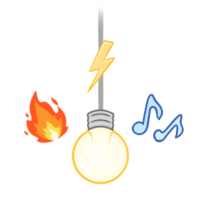Conservation of Energy
This lesson covers:
- What conservation of energy means
- What we mean by 'closed' and 'open' systems
- Examples of how energy can be dissipated
Which two of the following are false?
Energy can be dissipated
Energy can be destroyed
Energy can be transferred
Energy can be created
Energy can be stored
|

What happens to 'dissipated' energy?
|
Open vs closed systems
An open system exchange energy and matter with its surroundings. A closed system exchange energy or matter with the surroundings.
|
As a bowl of hot porridge cools down, what happens to the energy in its thermal energy store?
It is transferred to gravitational potential energy
|
What is the main energy transfer of a marathon runner? Chemical energy ➔ kinetic energy Elastic potential energy ➔ chemical energy Gravitational potential energy ➔ kinetic energy
|
Not all of the chemical energy from the runner's cells would be converted to kinetic energy, which other form is it most likely to be converted to? Magnetic energy Thermal energy Nuclear energy
|
|